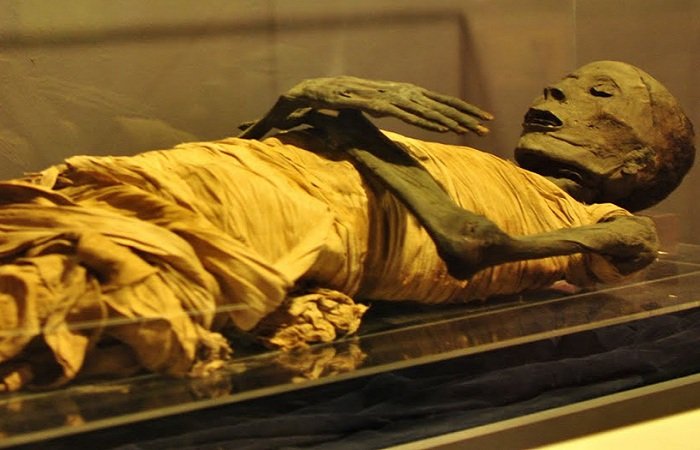Amazing Transferring the Ancient Egyptian Royal Mummies.
The Mummies Room in the Egyptian Museum
The Egyptian Museum, one of the largest and most famous international museums, is located in the heart of Egypt’s capital “Cairo” on the northern side of Tahrir Square. Its history dates back to 1835, when it was located in the Azbakeya Garden, where it included a large number of various antiquities, before being transferred to the second exhibition hall.
Saladin Citadel, until the thought of the French Egyptologist Auguste Mariette, who was working in the Louvre Museum on the opening of a museum in which he displays a group One of the antiquities on the Nile shore at Bulaq, and when these ruins were exposed to the risk of flooding, they were transferred to a special annex to the Khedive Ismail Palace in Giza, then Egyptologist Gaston Maspero came to open in 1902 during the reign of Khedive Abbas Hilmi II, building the new museum in its current location in the heart of Cairo.
The Egyptian Museum in Cairo opened its first hall for displaying royal mummies in 1996, and ten years later, in 2006, another hall was opened, which includes 11 mummies of kings and priests from the New Kingdom dynasties, the twentieth dynasty, and the 21st dynasty.
Egypt is preparing for receiving a great touristic event at the end of 2020 which is transferring the royal mummies from The Egyptian Museum in Tahrir to a new place where National Museum of Egyptian Civilization (NMEC). NMEC will receive 22 royal mummies for both ancient Egyptian kings and queens who are “Sknin Ra – Tuthmosis I – Ahmose Nefertari – Amenhotep I – Tuthmosis II – Queen Hatshepsut – Tuthmosis III – Amenhotep II – Tuthmosis IV – Amenhotep III – Ramesses II – Merenptah – Seti II – Sabah – Ramses IV – Ramses V – Ramses IX- Seti I”. These mummies will be displayed in a new concept whereas each king will be exhibited beside parts of his collections discovered in his tomb. This display will allow visitors to identify on kings’ personalities through their images and treasures.

How does Cairo prepare to receive that great event?
These mummies will be transferred in a great royal procession whereas it will be on newly manufactured Pharaonic-style war wheels pulled by purebred Arabian horses, the Republican Guard teams will fire gunshots and do military shows for celebrating. All buildings in the entire area of Cairo and the surrounding streets will be painted with one color as preparing for receiving this royal procession.
The Hall of Royal Mummies in the Egyptian Museum in Tahrir was simply a room where royal mummies were displayed alongside the rest of the museum’s antiquities.
The most noticeable difference between the two halls is the shape of the new hall, which is distinguished by audio-visual effects and enormous capabilities that dazzle museum visitors.
The entrance to the new Royal Mummies Hall is located beneath the central hall of the Museum of Civilization, and the visitor descends to the museum’s first level to enter the hall.
Ancient Egyptian tombs were divided.
The hall of royal mummies was divided from the inside into smaller halls, and a number of mummies were placed in each hall with an honor board, which is a complete identification board for each one, as well as a display projector that reviews the history of each mummy, with a display of some of the coffins of the mummies that were found during their discovery.
The hall of royal mummies was divided from the inside into smaller halls, and a number of mummies were placed in each hall with an honor board, which is a complete identification board for each one, as well as a display projector that reviews the history of each mummy, with a display of some of the coffins of the mummies that were found during their discovery.
The museum’s official working hours start from nine in the morning until three in the evening, due to the circumstances of the holy month of Ramadan, without an evening period, until now.
The National Museum of Egyptian Civilization in Fustat received, on April 3, 22 royal mummy in a majestic procession from the Egyptian Museum in Tahrir to display it in its permanent headquarters inside the National Museum of Egyptian Civilization in Fustat. of kings and 4 mummies of queens, and last July he received 17 royal coffins.
Explore Egypt Tours Tripadvisor


Comment (0)